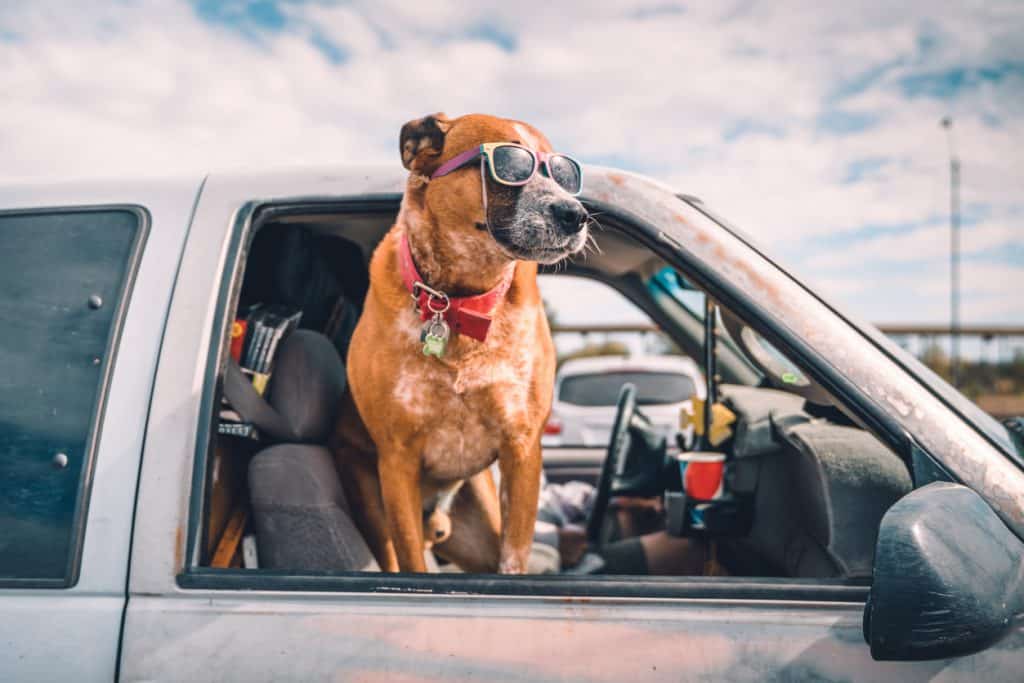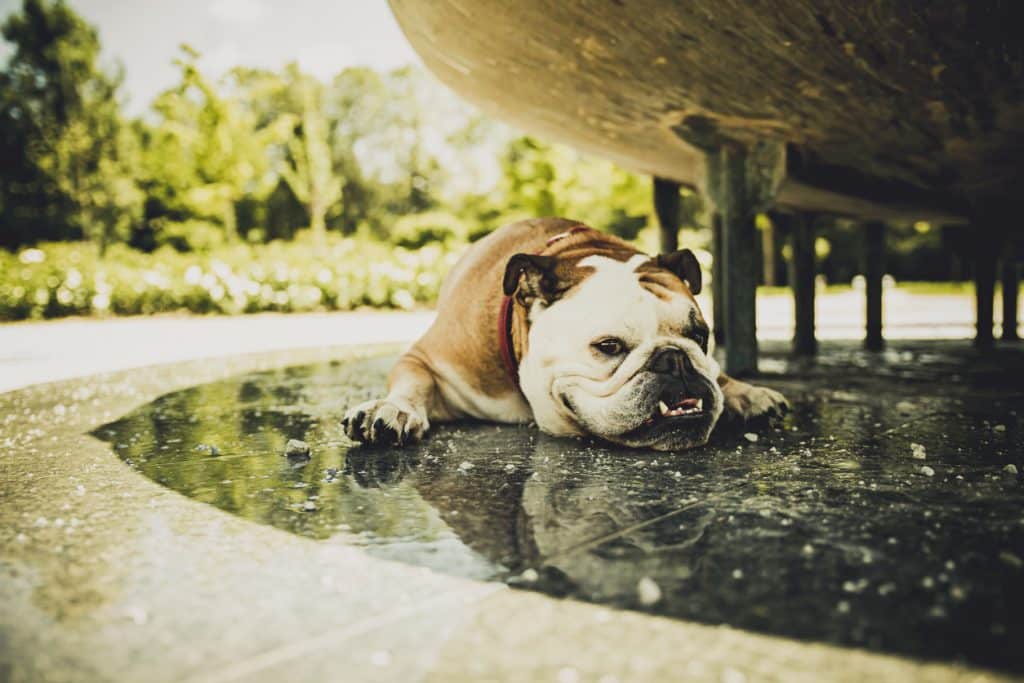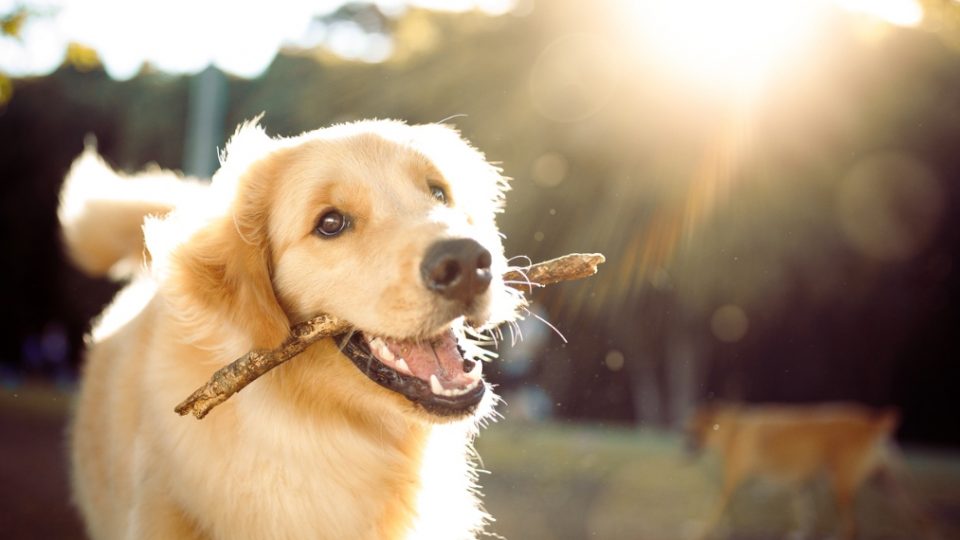- Not a substitute for professional veterinary help.
Reviewed by Dr. Sarah Nelson, DVM, on July 11, 2022
Heatstroke is a potentially fatal disorder for both dogs and humans and is most commonly seen during the hotter summer months. It’s defined as a state of extreme hyperthermia with internal body temperatures of 41°C that results in thermal injury to the the brain and other organs. Heatstroke occurs when heat generation exceeds the body’s ability to dissipate or remove the heat.
This condition is rare in cats but occurs frequently in dogs. Dogs that are especially at risk of suffering from heatstroke include:
- Dogs left in parked cars
- Puppies
- Senior dogs
- Dogs with short muzzles (Pugs, Bulldogs, French Bulldogs, Pekingese, Boston Terriers, etc.)
- Dogs with thick coats (Huskies, German Shepherds, Akitas, Malamutes, etc.)
- Overweight and out-of-shape dogs
- Dogs with underlying medical issues (arthritis, heart disease, respiratory or endocrine disorders, collapsed trachea, etc.)
- Dogs that live in hot, humid climates
- Dogs doing strenuous exercise
- Dogs who are not acclimatised to hot weather

Why does heatstroke occur?
Temperature regulation is controlled by a special centre, the hypothalamus, in a dog’s brain. Core body temperature is kept relatively constant by this area of the brain despite surrounding temperature fluctuations.
When the temperature surrounding the dog and the internal temperature of the dog increases, the regulatory centre in the brain stimulates panting, drooling, and dilation of the body’s blood vessels to cool the body by evaporation and radiation.
Since dogs sweat mainly from their footpads, sweating is not an effective means of cooling for dogs. When the dog’s natural cooling mechanisms are unable to keep up with the elevation in their body temperature, heatstroke occurs.
How to prevent heatstroke
Heatstroke, while dangerous, is a highly preventable condition that can easily be defeated with a little bit of awareness. Being cognisant of the heat and humidity in your area, paying attention to non-verbal cues from your dog, and always erring on the side of caution will help make sure you and your dog both have a safe and happy summer. Here are a few tips and tricks to beat the heat:
- Never leave a dog in a parked car or other closed compartments, no matter how briefly, even with the windows open or cracked. Cars can heat up to 11 degrees hotter than the outside environment in minutes—up to 22 degrees hotter in one hour—and dogs naturally run hotter than humans.
- At very high temperatures, keep pets indoors. If there’s a heat advisory for people, the same is true for pets. Walk your dog in the early morning or late at night, after sunset, when temperature has cooled down.
- Never leave a dog unattended outdoors in the heat. Heatstroke can occur in less than 30 minutes depending on heat and humidity, even with access to water and shade.
- During extreme heat, limit outside exposure, play, and walks as much as possible. Take walks and other outdoor activities during the coolest times of day, like the very early morning or very late evening. Do not allow strenuous exercise such as running or chasing the ball outdoors during extreme heat.
- Be aware of how humidity impacts the heat index in your area. The heat index is the combined impact of both temperature and humidity and can give you a better idea of what the outside temperature is actually like.

Some common signs of heatstroke in dogs include:
- Heavy panting
- Rapid and/or difficulty breathing
- Increased heart rate with a bounding pulse
- Lethargy
- Lack of coordination
- Vomiting and diarrhoea
- A deep red or purple coloured tongue or gums
- Seizure
- Unconsciousness or collapse
- Excessive drooling/salivation
The salivation occurs as the body works harder and harder to get rid of pent-up heat. As heatstroke progresses, severe breathing distress occurs. Many dogs will seem as if they can’t catch their breath. Flip their lips and look at the gums and tongue—the gums become bright red, and bruises can be seen on the gums or skin.
As the condition worsens, collapse, seizures, lethargy, and abnormal mental states occur. Increased urination, bloody diarrhoea, and vomiting blood may occur due to damage of the blood vessels in the intestines and stomach.
A sign that the condition is worsening is that previously dark and reddish gums become pale and ashen. The pulse then weakens. The elevated body temperature may decrease to below normal, and neurological signs such as seizures and coma can occur, often preceding death.
Keep an eye on your pet at all times in hot weather
Don’t wait under your pet is showing signs of heatstroke: by then, the chance of death is much higher.
If you notice any signs of heatstroke in your dog, take your dog out of the heat immediately, preferably into an air-conditioned room or house, offer plenty of water, and start the cooling process while making your way to the vet.
What to do if your dog has heatstroke
Cooling is critical. Start cooling efforts prior to and on the way to the nearest veterinarian. Too much cooling, however, can make things worse. The most important thing to do is to get the dog to the vet—any vet—quickly.
What you can do to help:
- Get the dog out of the sun, ideally into an air-conditioned home.
- Lay the dog on a cool surface—tile flooring is great—or in a bathtub or shower since you will be wetting them down.
- Wet the dog thoroughly with cool or room temperature water.
- Wet ear flaps and paws with cool water.
- Direct a fan on them if one is available.
- Use a rectal thermometer to monitor their temperature every few minutes.
What NOT to do:
- Don’t use ice or ice cold water. This causes the blood vessels in the skin to constrict, trapping heat in the body’s core, where it’s causing the most damage.
- Don’t over cool your dog. Once the rectal temperature drops to 39°C, stop the measures described above and get to the vet if you haven’t left already.
- Don’t force your dog to drink—it’s OK to have a bowl of fresh cool water available if your dog is interested in drinking on his or her own.
- Don’t leave your dog unattended for any length of time.
- Don’t take a “wait-and-see” approach. Dogs that are allowed to “sleep it off” are almost always worse later.
Once your dog reaches the veterinary hospital, the health care team will take over with more intense therapies as needed.
What is the prognosis for dogs with heatstroke?
The overall prognosis for a dog with heatstroke depends on the length of time the animal had an elevated temperature, the degree of temperature elevation, the amount of organ damage incurred, and the response to intensive supportive care. Whether a dog can recover also depends on whether the dog has risk factors such as old age, or is brachycephalic, or the cause of heat stroke is particularly extreme—being trapped in a vehicle leads to the most severe cases.
Recovered animals may still have some neurological deficits. In one study of 54 cases, the overall death rate was 50%.
Take the heat off your pet with proper preventive measures. The dog days of summer can be an enjoyable time for all, as long as you stay cool and safe.


